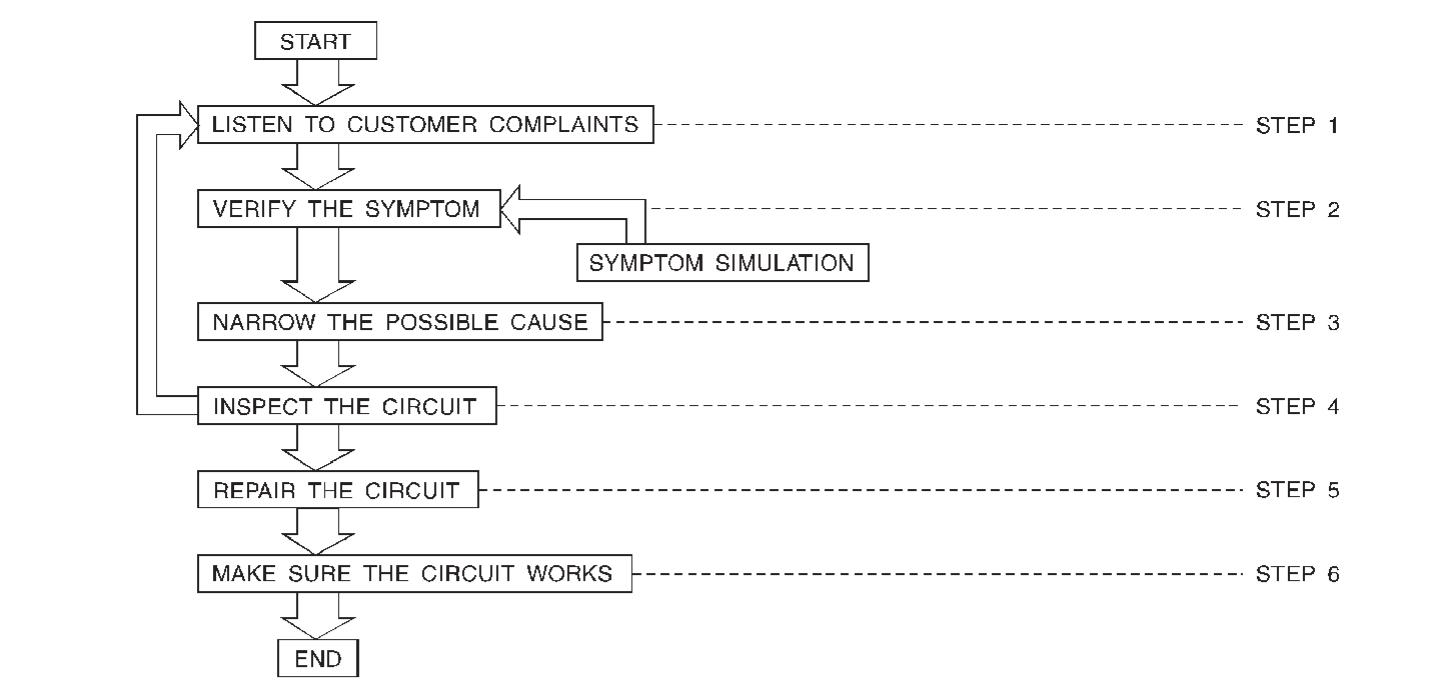Work Flow
WORK FLOW
| STEP | DESCRIPTION | |
| STEP 1 | Get detailed information about the conditions and the environment when the incident occurred. The following are key pieces of information required to make a good analysis: | |
| WHAT | Vehicle Model, Engine, Transmission/Transaxle and the System (i.e. Radio). | |
| WHEN | Date, Time of Day, Weather Conditions, Frequency. | |
| WHERE | Road Conditions, Altitude and Traffic Situation. | |
| HOW | System Symptoms, Operating Conditions (Other Components Interaction). Service History and if any After Market Accessories have been installed. | |
| STEP 2 | Operate the system, road test if necessary. Verify the parameter of the incident. If the problem cannot be duplicated, refer to “Incident Simulation Tests”. | |
| STEP 3 | Get the proper diagnosis materials together including:
Identify where to begin diagnosis based upon your knowledge of the system operation and the customer comments. | |
| STEP 4 | Inspect the system for mechanical binding, loose connectors or wiring damage. Determine which circuits and components are involved and diagnose using the Power Supply Routing and Harness Layouts. | |
| STEP 5 | Repair or replace the incident circuit or component. | |
| STEP 6 | Operate the system in all modes. Verify the system works properly under all conditions. Check you have not inadvertently created a new incident during your diagnosis or repair steps. | |
![[Previous]](../../../buttons/fprev.png)
![[Next]](../../../buttons/fnext.png)
